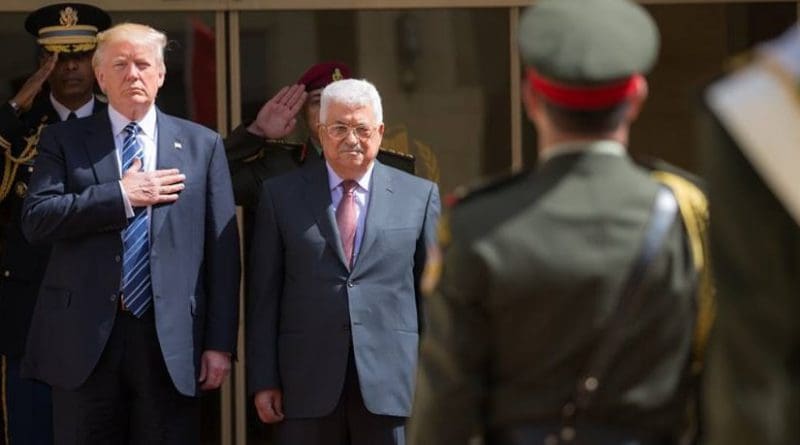What Trump Must Do To Push Middle East Peace – OpEd
By Ray Hanania
US President Donald Trump has created an opportunity that did not previously exist in pushing for a possible peace between Israelis and Palestinians. His unpopularity with the US political establishment actually gives him a power his predecessors lacked. Not worried about popularity or acceptance, as they were, Trump can do what they could not.
But he still needs to take the momentum away from extremists in Israel and Palestine, who dominate the public debate and are determined to block peace at all costs, including by violence. Trump can start by reaching out to Palestinian and Jewish community leaders in the US, bringing them together and creating a new dynamic that is critical to peace. The future of Palestine and Israel is defined more in America than in any other place.
Over the years the two communities have drifted apart, but they need to come back together to resurrect an atmosphere that is conducive to peace. Right now the atmosphere is choked by conflict, which is fueling violence and empowering extremists. There cannot be peace without re-empowering a movement of activists who believe in the fundamentals of an Israeli-Palestinian peace agreement.
Those fundamentals do not have to be specific, but they must involve compromise, mutual recognition and acceptance of national aspirations, and non-violence. More importantly, to get past the pain of violence, they must acknowledge that both sides have done terrible things to each other. No side is better or worse.
Extremists rely on the bitterness that violence creates to keep the two sides from coming together. But violence is not natural to Israelis and Palestinians, and it contradicts the moral foundations of the three involved religions: Judaism, Christianity and Islam.
By convening a conference of American Jews and Palestinians who reject extremism and vengeance and embrace compromise, Trump can take a giant step forward to reinforce hope for peace. This could give the peace process the one ingredient that is missing today: Confidence on both sides that peace can work.
The first meetings between them should not focus on negotiations but on re-acquainting. In the 1990s, when US President Bill Clinton first brought Israeli Prime Minister Yitzhak Rabin and Palestinian President Yasser Arafat together to embrace a workable outline for peace, the process had the backing of a significant number of American Palestinians and Jews, who talked together, grieved together, and broke bread and stereotypes together.
Peace requires the courage of these communities’ leaders. We can re-create the atmosphere of compassion, understanding and willingness to compromise required to achieve peace. What destroyed the peace process was the powerful and growing extremist movements among both Israelis and Palestinians.
Groups such as Hamas, the Israeli settler movement and its advocates, like many of Rabin’s successors, did everything to destroy the peace process that he and Arafat crafted. Hamas pushed children to commit horrendous suicide bombings targeting civilians to create anger and hate. Settlers, encouraged by extremists such as prime ministers Ariel Sharon and Benjamin Netanyahu, provoked that violence and confiscated land to prevent compromise.
With no coalition of moderate Jews and Palestinians, it has been easy for extremists to block peace and fuel hatred. Before there can be a revitalized peace process, there needs to be a vibrant, moderate coalition of Palestinians and Jews, mainly in the US, which would expand to those in Israel and Palestine.
Such a coalition would redefine the common rhetoric about Israel and Palestine, and get away from the “gotcha” debates where words such as “occupation” have been replaced by misleading words such as “disputed.” We need to get away from the extremist rhetoric that weakens public confidence in peace. We have to prevent anger and emotion from controlling our actions. We need to replace anger with hope, and define a clear vision of peace.
There is no better way to visualize peace than to see Palestinians and Israelis reject extremism, embrace the national rights of both sides, and work together with one voice. The White House is a very powerful symbol that Trump can use to restore the faith that fueled Rabin and Arafat in the 1990s. We do not have to start from scratch.
Moderates cannot leave the future of Palestine and Israel in the hands of violent extremists who believe that their only salvation is the other’s total destruction. Trump can bring us together and make peace great again.

